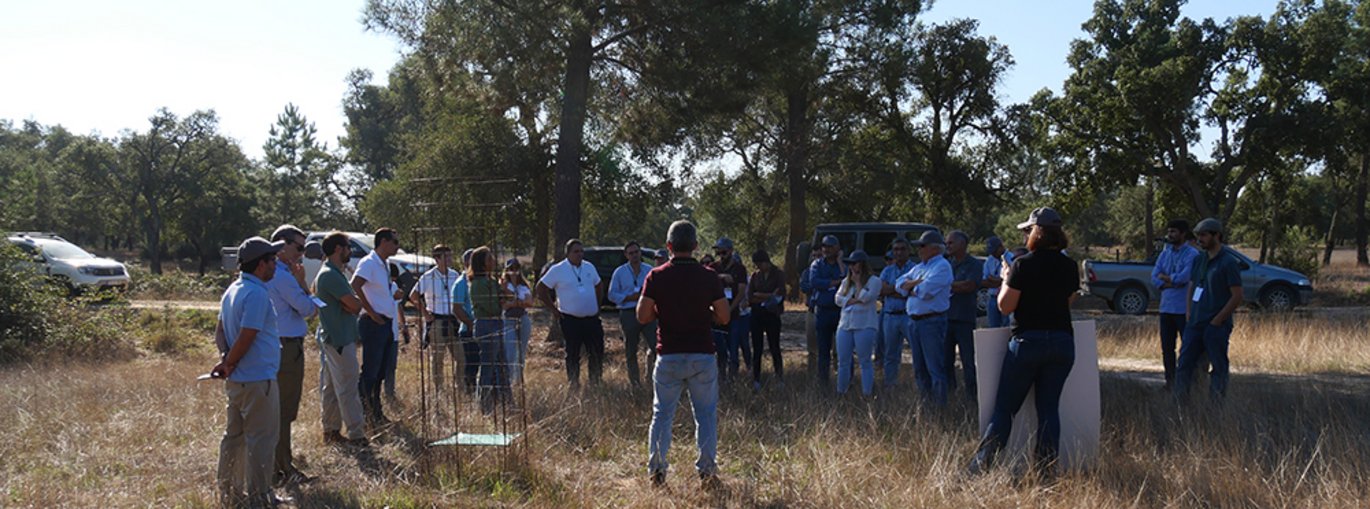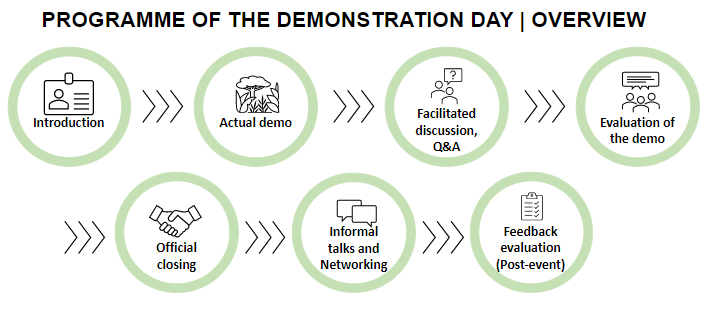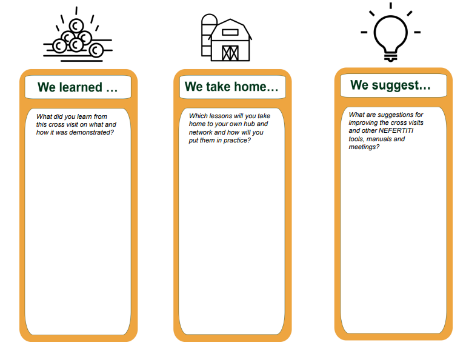How to plan and organize an on-farm demonstration day
In 2023 and 2024 – Mixed is planning 20 on-farm demonstration events in 10 European countries.



Using the hub structure developed by NEFERTITI, an EU project that has established a farm demonstration network of 45 hubs across Europe, Mixed will develop and plan these events. Although, the participation on the “NEFERTITI Final Webinar” was suggested to the Mixed’ partners, CONSULAI also organized a demo event workshop, during September’s Annual Meeting 2022.
About the workshop
The main topic was how to plan and design a demonstration event to increase farmer-to-farmer knowledge exchange. CONSULAI explained the basics of this type of event such as a recommended programme, choice of target groups and event goals, a few learning methods that could be used, as well as some advice and recommendation to its planning.
Starting by saying that a field demonstration day is not a typical training session, CONSULAI stated that demo events usually have two common goals: the demonstration of an innovation in a practical perspective and knowledge creation and dissemination through the peers involved.
The ideal demo event has real life context, hands on experience and interaction between AKIS actors, ensuring that everyone involves learns something. Below, we share some of the key messages and useful guidelines that were shared within the workshop given.
The goal of a demo event
The best way to start organizing a field demonstration day is to have in mind that it is a different event from a regular training session or presentation. The two common goals to every demo event are to demonstrate an innovation in a practical perspective and to create and disseminate knowledge throughout the peers involved (organizer and participants). Thinking and designing its program can be difficult (See figure 1 for a standard program on demonstration days).
Knowing why, what, how and who
Take into careful consideration:
- Why are you organizing this event? Why should participants be interested in coming?
- What are you presenting? Even if it is to present a new technology or concept, think how your event can be different from a commercial presentation?
- How will the information disseminated be used?
- Who do you want to come? How can it be even more interesting to that target audience?
A demo event can be used to introduce a new technology/concept, to solve a specific problem and/or to fix an existing knowledge gap – in case of H2020_Mixed Project, you could talk about one mixed system in particular, an innovation presented, or problem found in a type of system.
As previously said, a successful demo event should have hands-on and/or real-life experience. Therefore, the disseminated knowledge should be practical, and the learning methods adapted to the invited target group.
If you want farmers as your target audience, invite a more experienced farmer to speak, offer a guided tour of an innovative farm – presenting practical aspects of the information (advantages and disadvantages, barriers, use in other farms/systems). If the desired audience are advisors, researchers and policy makers, don’t give up on the idea of having a farm host and tour, but adapt the information presented to a wider perspective – social, economic and environmental impacts, regional and EU effects, among others.
'Peer2Peer' learning is a two-way street
Make sure this event stands out by having participants speak their minds and ask questions.
If the main goal of the demo is knowledge transfer between all actors (participants and organizers), prepare workshops, small group discussions, or other type of interactions, to ensure that everyone has an opportunity to speak their mind. The presence of a facilitator is highly recommended since it keeps the conversation going.
Furthermore, even if the goal is to introduce a new technology or innovation, do not lose the opportunity to get farmers and other actors’ opinions and views.
As an example, each participant gets three post-it notes in which they should write: 1. One aspect they learned; 2. One aspect they take home; 3. One aspect they would like to improve to the project. Give the participants some time to think about these three questions and then discuss it with the room.
For more information on demo events, you can take a look at Nefertiti’s Training Kit, a document about the organization of demonstration events - FarmDemoTrainingKit - the Project’s website, or the Webinar suggested above (Nefertiti Final Webinar Part1 and Part 2).
> You can also consult and download our poster on demo-events
Authors
Carolina Ramos – CONSULAI
Maria Mendonça – CONSULAI
